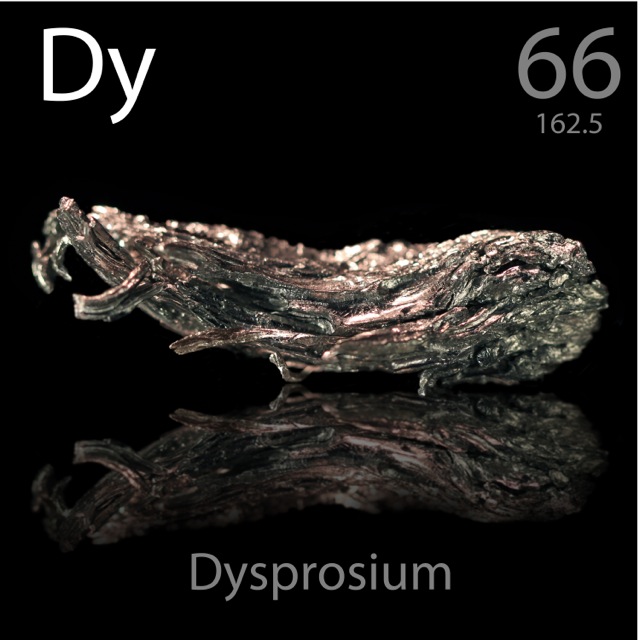"Dysprosium is a chemical element with the symbol Dy and atomic number 66. It is a rare earth element with a metallic silver luster. Dysprosium is never found in nature as a free element, though it is found in various minerals, such as xenotime. Naturally occurring dysprosium is composed of 7 isotopes, the most abundant of which is 164Dy."
is a rare earth element with a metallic silver luster. Dysprosium is never found in nature as a free element, though it is found in various minerals, such as xenotime. Naturally occurring dysprosium is composed of 7 isotopes, the most abundant of which is 164Dy."
"Dysprosium was first identified in 1886 by Paul Émile Lecoq de Boisbaudran, but was not isolated in pure form until the development of ion exchange techniques in the 1950s. Dysprosium is used for its high thermal neutron absorption cross-section in making control rods in nuclear reactors, for its high magnetic susceptibility in data storage applications, and as a component of Terfenol-D. Soluble dysprosium salts are mildly toxic, while the insoluble salts are considered non-toxic."
"Dysprosium and holmium have the highest magnetic strengths of the elements,[2] especially at low temperatures.[3] Dysprosium has a simple ferromagnetic ordering at temperatures below 85 K(−188.2 °C). Above 85 K (−188.2 °C), it turns into an helical antiferromagnetic state in which all of the atomic moments in a particular basal plane layer are parallel, and oriented at a fixed angle to the moments of adjacent layers. This unusual antiferromagnetism transforms into a disordered (paramagnetic) state at 179 K (−94 °C)."